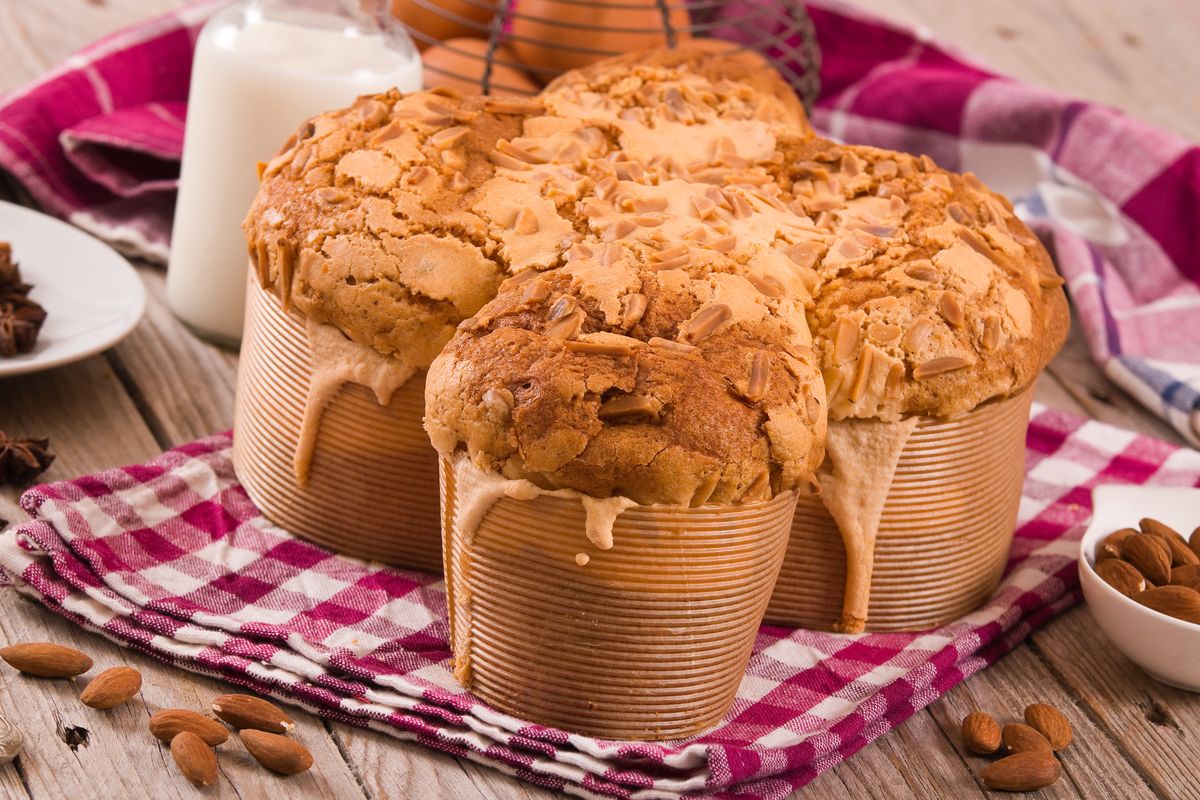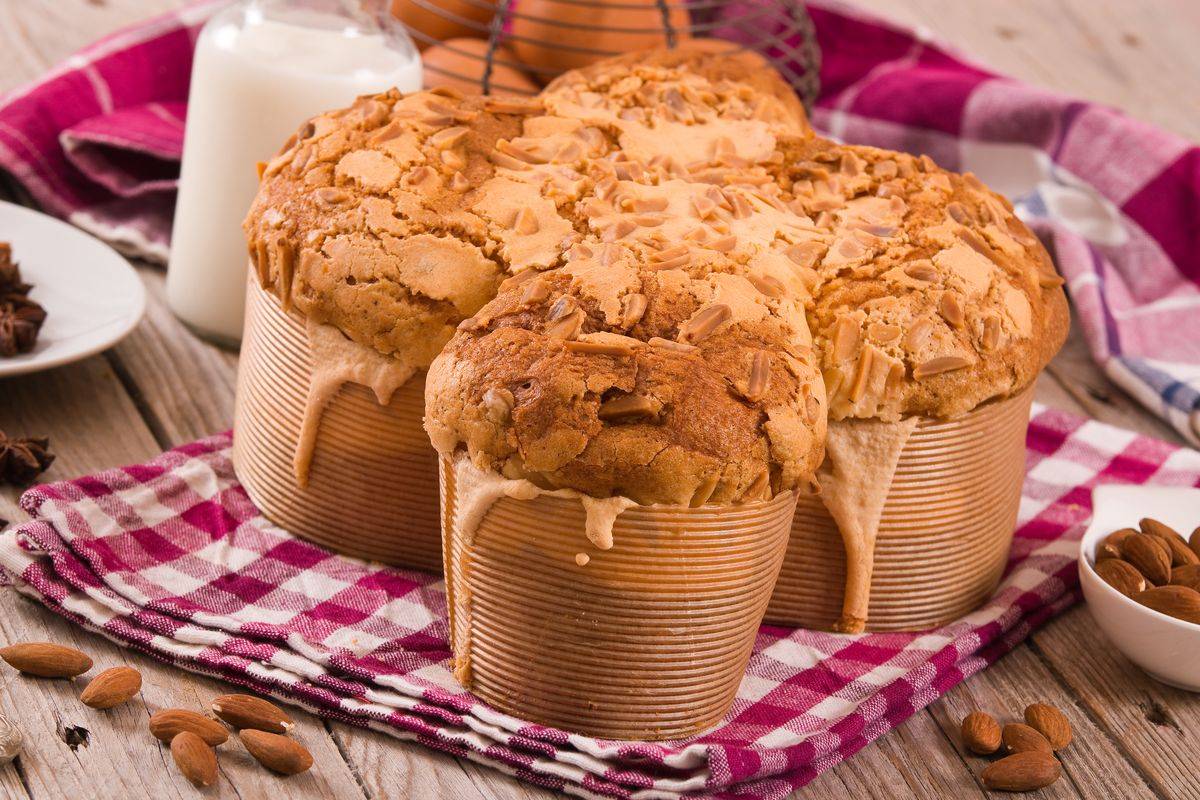Recipes
The Easter Colomba recipe (perfect for those who have time)


The Easter Colomba is a typical product that cannot be missed on our tables: let's discover together how to prepare it at home with the original recipe!
From North to South, the dove is an Easter dessert that everyone agrees on. Soft and fragrant , it cannot be missing from our tables. The Easter Colomba recipe can be a bit laborious if you are not used to large leavened products , but I am sure that the result will repay you for the efforts made.
Today we prepare the dove with brewer's yeast, which is the simplest and fastest way to prepare this Easter dessert without too much effort. The result will be amazing and you will stop buying the packaged one!

How to prepare the Easter dove
Preparing the dove at home is certainly not a walk in the park, however if you take your time and take your time the satisfaction will come. To give you a hand in the implementation here you will see all the fundamental steps clearly separated with relative instructions . In our opinion, for the success of the dessert, it is quite important to use the mixer, but you can also knead by hand according to your needs, preparation times will certainly be longer (but don't give up).
Yeast
- 15 g of fresh brewer's yeast
- 50 ml of milk
- 60 ml of water
- 100 g of Manitoba flour
- Let's start by preparing the first dough , a sort of yeast. In a bowl, dissolve the yeast in the milk and water mix.
- Add 100 g of flour, mix quickly to mix everything together.
- Cover with cling film or a clean cloth and leave to rise covered in the oven with the light on for about two hours .
First dough
- 20 g of sugar
- 150 g of flour
- 20 g of butter
- 1 egg and 1 yolk
- Transfer the yeast to the bowl of a stand mixer fitted with the dough hook . Turn it on at low speed and add 20 g of sugar, then 150 g of flour.
- When these two ingredients have blended, add 20 g of butter at room temperature cut into cubes, being careful to insert 1 piece of butter at a time , allowing it to fully incorporate into the dough before moving on to the next.
- Also add a whole egg and the yolk (keep the egg white aside for the icing).
- Let the machine work until the dough is stringed .
- Then transfer it into a bowl, after having given it the shape of a ball, covered with cling film or a clean cloth and leave to rise again in the oven with the light turned off until it doubles in size .
Second dough
- 100 g of sugar
- 150 g of flour
- 1 egg and 1 yolk
- 80 g of butter
- 10 g of salt
- Vanilla pod or essence
- 80 g of raisins
- 50 g of candied orange
- First, soak the raisins in a small bowl of warm water for about 10 minutes .
- Place the dough back into the bowl fitted with the hook and add the remaining sugar.
- When it has incorporated, add the remaining flour (150 g), the egg, the egg yolk (keeping the egg white aside for the icing) and the salt.
- Finally add the butter in pieces, one piece at a time, waiting for the previous one to be absorbed before adding more.
- Flavor with vanilla and add the candied orange peels .
- Squeeze the raisins and add them to the dough.
- Let the machine work until the dough comes together . Times vary depending on the power of the planetary mixer from 10 to 20 minutes.
- Then transfer it to a lightly floured work surface and knead for a few more minutes to distribute the aromas well.
- Now widen the dough and make the reinforcement folds . Fold two edges towards the center of the dough and repeat the operation 2-3 times (this way you will develop the gluten network and it will rise more easily and in less time).
- Shape it into a ball and put everything in a bowl, cover with cling film or a clean cloth and leave it for around 1-2 hours at room temperature for the leavening to activate, then put the dough in the fridge for around 16 hours , then for another 3 hours in the oven turned off with the light on. If you have less time you can also avoid leavening in the fridge, but leave it at room temperature or even better in the oven turned off with the light on, in this case it will take from 6 to 12 hours to have a quadrupled loaf (which is precisely the size we need is needed).
Icing
- 20 g of corn starch
- 50 g of blanched almonds
- 2 egg whites
- 60 g of sugar
- Prepare the icing by placing the egg whites in a bowl with the sugar.
- Separately , blend the peeled almonds until you obtain a sort of flour.
- Beat the egg whites and sugar with a fork until the latter is incorporated into the egg whites, then add the starch and flour.
- Mix well until you obtain a sort of thick, sticky cream which we recommend keeping in the fridge until used.
Form the dove and cook it
- Take the well-leavened dough and bring it back to room temperature , then divide it into two parts (one slightly larger than the other).
- Make two loaves and take a dove mould.
- The first strand is to be positioned at the height of the wings (the smallest one), while the second will form the body of the dove.
- Leave to rise once again in the turned off oven for about 3 hours , check that it is well covered with a clean cloth.
- When the dove has almost reached the edge of the mold, take the icing from the fridge and pour it over the raw cake, completing with granulated sugar and the almonds in their peel.
- Cook at 160°C for 55 minutes and, once baked, skewer it with long irons, just as you usually do with panettone, and let it cool suspended and upside down.
Your homemade Easter dove is ready to be served at the end of your Easter menu.
Do you have little time? Then we recommend the easy version of the Colomba : the one without leavening.
How to make an Easter dove at home? Small construction tips
The recipe for the artisanal colomba is certainly not a walk in the park, in fact we recommend trying to prepare it only for those who are very familiar with dough , stringing and leavening . If you need some advice then, this is the right place.
– Processing and leavening. The correct processing of each dough will allow you to reach the desired level of levitation which at the end of the recipe will make your colomba look almost like the packaged ones . If, following our rest times, the various doughs do not appear to have risen to the right level, you should not despair: recreating the same humidity and temperature conditions is not easy but do not give up. The advice is to leave the dove a little more time or it may be that the dough has not been strung properly.
How do you know when the dough is strung? When it has absorbed all the ingredients well, it is smooth to the eye, it sticks to the hook of the mixer and when you pull a piece it doesn't break immediately.
– Pay attention to the temperature. When kneading the first and second dough, be careful that it does not mix too much, otherwise the leavening will not take place or will not take place correctly. If during the kneading phase the dough becomes too hot, turn off everything and start again after a few minutes.
– Aromatic mix . To make the colomba even tastier, in some cases, an aromatic mix is made a few hours before the final mixture. If you want to prepare it, we recommend placing 20 g of orange paste, vanilla essence, 1 teaspoon of honey, lemon and orange zest, 2 teaspoons of liqueur (optional) in a bowl. Then add it when making the second dough.
– Cooking . Cooking the homemade Easter dove is also important. Pay close attention to your oven, only if you know it well will you know whether to increase or decrease the times recommended by us. Having said this, it is also good to remember that the fundamental part is, in addition to the various kneading and leavening steps, that of resting and cooling the finished product. Turning the dove upside down is essential so that it remains inflated and does not collapse on itself. Do it as soon as it comes out of the oven and leave it in this state for a long time (we also recommend 8-10 hours ) so that it cools completely and stabilizes. Only then return it to the right position and serve it on the table (or wrap it up and give it as a gift to whoever you prefer). This step, we are aware, is not for everyone, you can also omit it and serve the colomba on the table as soon as it is lukewarm.
For a more delicious variant , here is the chocolate dove or other Easter desserts to try !
storage
Whole and well sealed, or under a sweet bell, the dove remains soft even for 4-5 days . Once cut, we remind you to wrap it in transparent film and keep it for about 2-3 days maximum.
History and origins of the sweet Easter dove
It might shock you, but the traditional colomba was initially born from a panettone company, one of the most famous and which begins with M like Motta. It was the 1930s when the company's advertising manager proposed a very similar dessert for the Easter period in order to reuse the machinery and dough without substantial changes.
Even the Milanese Angelo Vergani took up the recipe again in 1944 and his company still prepares Easter doves today and he was one of the architects of the fortune of this leavened dessert which today is also known outside Italy.
Riproduzione riservata © - WT











